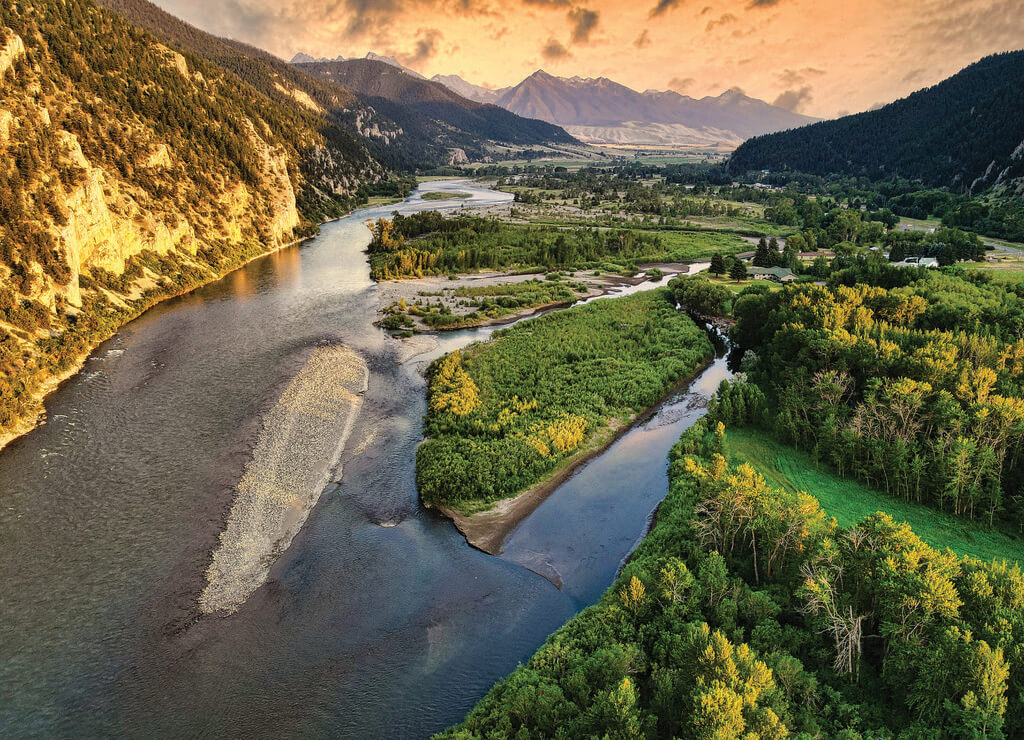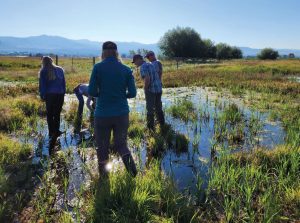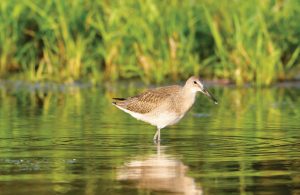
01 Feb Round Up: Montana Freshwater Partners
Montana Freshwater Partners (MFP) works to restore and preserve healthy rivers, streams, and wetlands by applying science-based practices to complex problems impacting water resources and communities throughout Montana. Considering that 80 percent of all life is directly impacted by an aquatic ecosystem of one sort or another, the health of these delicate resources is vital. By coordinating the interests and efforts of a wide range of stakeholders and leading innovative programs like the Yellowstone River Stewardship Campaign, the women of MFP are having a lasting impact on the people and places that define Big Sky Country.
Here, licensed professional civil engineer and executive director Wendy Weaver shares the why behind MFP’s critical work throughout the state.

Photo by ASHTON BUNCE
BIG SKY JOURNAL: Tell me a little about the history of MFP and its evolution since the organization’s inception.
WENDY WEAVER: MFP (formerly Montana Aquatic Resources Services) was founded by some of the foremost water experts in the state over a decade ago, when organizations like Trout Unlimited, Montana Department of Environmental Quality, and Montana Audubon Society observed that the state was losing its wetlands and streams to development at an alarming rate. The Clean Water Act requires compensatory mitigation — restoring a wetland or stream to prevent the loss of valuable ecosystem functions — but options were lacking in Montana in 2011. MFP was created to fill that gap. Our program receives oversight from the U.S. Army Corps of Engineers, the U.S. Environmental Protection Agency, the U.S. Fish and Wildlife Service, Montana Fish, Wildlife & Parks, and the Montana Department of Environmental Quality. In exchange for mitigation fees, MFP works with partners to develop high-impact stream and wetland restoration, conservation, and enhancement projects across the state.
Our niche has always been providing technical expertise and innovative, collaborative solutions to natural resource management. After the flood on the Yellowstone River in 2022, for example, we immediately helped coordinate the response with our local partners, as well as local, state, and federal agencies. We’re still working closely with Park County and the city of Livingston to promote projects that boost community and river resilience to future flood events. This includes updating the Yellowstone River channel migration map, providing education about flood and erosion risks, and identifying flood mitigation opportunities to enhance floodplain connectivity and reduce damage to critical infrastructure from future flood events.
Over the past six years, we have increasingly focused our work on the Upper Yellowstone River, our home watershed (our office is less than a mile from its banks in Livingston). Though the Yellowstone River is the longest free-flowing river in the contiguous U.S., it’s not immune to threats.
BSJ: Describe MFP’s involvement with preservation and restoration efforts across Montana. Why is this work important?
WEAVER: MFP’s mission is to restore, enhance, and protect these ecosystems for the benefit of people and our shared natural environment for generations to come. From forested and prairie pothole depressional wetlands to spring creeks and large rivers, our technical expertise is informed by and built from our work on a vast range of aquatic ecosystems.
Rivers, streams, wetlands, and riparian areas are some of our most important ecosystems. They provide critical ecosystem services to humans and are important as habitat for fish and wildlife species. Unfortunately, these ecosystems are facing ever-increasing pressure from development, land-use changes, invasive species, recreation, and climate change. These impacts have impaired many of our freshwater ecosystems across the state.

Photo by SCOTT JOHNSON
In Gallatin County, for instance, explosive, unfettered growth has led numerous wetland and stream areas to be paved over by development, with mitigation efforts often occurring over 90 miles away. Partnering with the Sacajawea Audubon Society, we are assisting in the development of the Indreland Wetland Mitigation site, a 40-acre wetland preserve in Bozeman that will mitigate the loss of wetland and stream function close to the impacts of development while maintaining critical ecosystem services within the community.
BSJ: What has been MFP’s greatest recent win, and what is your most pressing current concern?
WEAVER: It has been extremely validating over the past several years to see the work that we’ve put in and the relationships we’ve built locally and around the state starting to generate real momentum and success in the form of on-the-ground projects, community awareness, and coalition building. We now have restoration projects in progress in eight out of 16 watersheds in Montana. Locally, we have witnessed growing awareness around the importance of protecting natural river processes among community members, landowners, and local decision-makers — especially in the aftermath of the 2022 floods. The strong partnerships we have built with other conservation nonprofits, watershed groups, and agencies have enabled us to work together to apply for funding and implement projects so that we might accomplish more than we could on our own.
Climate change has been and continues to be our most pressing concern: The impacts we are seeing are exacerbated changes stemming from drought, floods, wildfire, and habitat fragmentation. Projects that increase water storage, promote floodplain connectivity, and recharge groundwater to support irrigation and streamflow will build resilience into our landscape in the face of these changes.
BSJ: What does a healthy, vital aquatic ecosystem look like in the state, and how can people mitigate their impact to support that health now and into the future?
WEAVER: A healthy ecosystem is one that provides numerous services, is dynamic, and is resilient in the face of variability. Rivers and streams that look “messy” with cold, connected, and complex habitats often contain multiple braided channels and a thick riparian or vegetative corridor that supplies them with the large trees and woody debris that ultimately create log jams. Log jams, in turn, form deep pools for fish and capture sediment moving downstream, promoting overbank flooding. Adjacent floodplains and wetlands act like sponges, absorbing these overbank flows, promoting groundwater recharge and storage, and filtering out harmful nutrients and toxicants. Frequent flooding deposits new sediment on islands and bars, creating the perfect substrate for cottonwood seedlings to germinate. Beavers often colonize these areas, building permeable dams that encourage even more groundwater storage. Native riparian and wetland vegetation thrives in these areas, providing habitat to myriad fish and wildlife species.
To support the health of these vital aquatic ecosystems, individuals can offset their own impact in a number of ways. If you are lucky enough to have property along a river or wetland, giving these aquatic ecosystems plenty of space to expand and contract is crucial (such as avoiding development within the floodplain or wetland and not blocking the river’s movement with riprap or berms). The same goes for agricultural operations. By not farming up to the streambanks and by eliminating, or at the very least limiting, livestock use in riparian areas and streams, we can allow these aquatic ecosystems to be self-sustaining. If people want a more active role, they can reach out to their local conservation district or local conservation NGOs, like MFP, to get involved in restoration projects.




No Comments